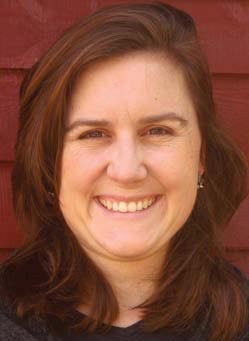A frequently cited study (circa 2002) states that 70 percent of magazines never make it past their first issue, and approximately 50 percent fail in the first year. In other words, new magazines have roughly the same mortality rate as the common meadow vole.
The outlook doesn’t improve much after that. Although reliable figures are elusive, a rule of thumb is that about 90 percent of magazines (and 100 percent of meadow voles) perish in the first decade.
This issue marks the twentieth anniversary of Northern Woodlands.
That’s remarkable. The magazine’s durability speaks to a continuing forest-stewardship ethic in the Northeast and the devotion of many people. It’s also a testament to the hard work and gumption of the magazine’s founders, Virginia Barlow and Stephen Long.
Their partnership began with a conversation at Long’s fortieth birthday party. At the time, he was a freelance journalist who wrote a hunting and fishing column for a local newspaper. Barlow, a forester and casual acquaintance, approached him with an idea. She was dismayed that a state publication, The Vermont Forest Quarterly, was ending its run due to lack of funding. She proposed putting together a newsletter to take its place.
Their conversation continued over the next several weeks. Soon, Long remembered, “we started to get grandiose ideas.” They would create a quarterly magazine. It would be moderate in tone and combine an attractive presentation with quality information about Vermont forests. Subscribers would be “readers who were really interested in a big picture of the woods but didn’t know it yet.”
As for the business plan – there was no business plan. According to Long, the whole enterprise was “seat of the pants.” It went forward because “we didn’t know any better.”
In December 1993, the partners began promoting their idea at Vermont forestry meetings. They recruited their first subscriber, Elwin Leysath, at one of these events. Did he think they would make it? “Virginia Barlow thought they would,” recalled Leysath. “And I thought, ‘I hope they do.’” (Leysath remains a subscriber.)
Over the next several months, Long and Barlow cobbled together a list of 300 subscribers, secured advertising (they reached out to every sawmill in the state of Vermont), and developed a mock-up with a faux article entitled, “Barlow Fells State’s Largest Pine.”
They decided to name their magazine Vermont Woodlands. They wrote and edited most of the first issue themselves, drawing on the talents of a small group of friends, including Long’s wife, author Mary Hays.
The first issue was 28 pages, printed in black and white. Because they intended to use it as a marketing piece, Barlow and Long screwed up their courage and ordered a whopping 10,000 copies. They sent the magazine to every landowner enrolled in Vermont’s current use program. The response “wasn’t terrible,” said Barlow. But the first years were a hard slog. She described her typical magazine work day, which started after she finished her full time forestry job. “I would come home, shovel in some horrible supper, and start entering subscriber information.”
She emphasized that the magazine would have been doomed without Long’s total dedication. “I really credit Steve. He picked it up and ran with it.” Although neither partner took any pay from Vermont Woodlands in the first year, Long quit his freelance work and devoted himself to the magazine full time.
When did they know they would succeed? There’s no clear answer to the question – maybe from the start, maybe much later. “We lived with uncertainty for a long time,” said Barlow.
The arrival of staff member Chuck Wooster in 1998 was a turning point, as was the decision to broaden coverage to all of the Northeast in 1999, and to establish the Center for Northern Woodlands Education in 2003. Another critical moment came in 2010, with the successful transfer of editorial responsibilities from Long to Dave Mance III.
Both Barlow and Long emphasized that the magazine would never have worked without the strength of their partnership. “It took incredible trust,” said Long, “when we hardly knew each other.” Barlow agreed. From the start, there was “some sort of bond…we would have done anything to make it work.”


